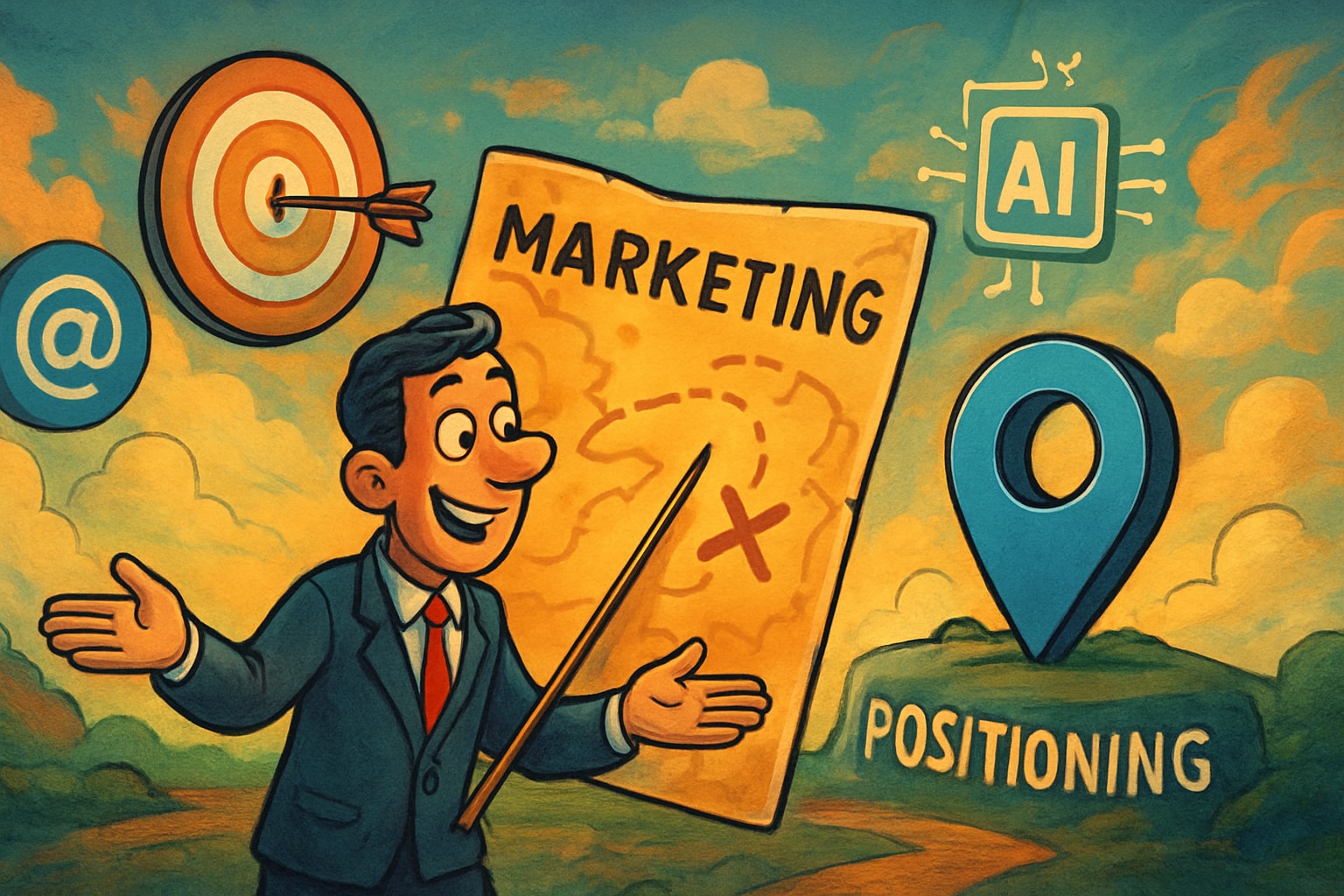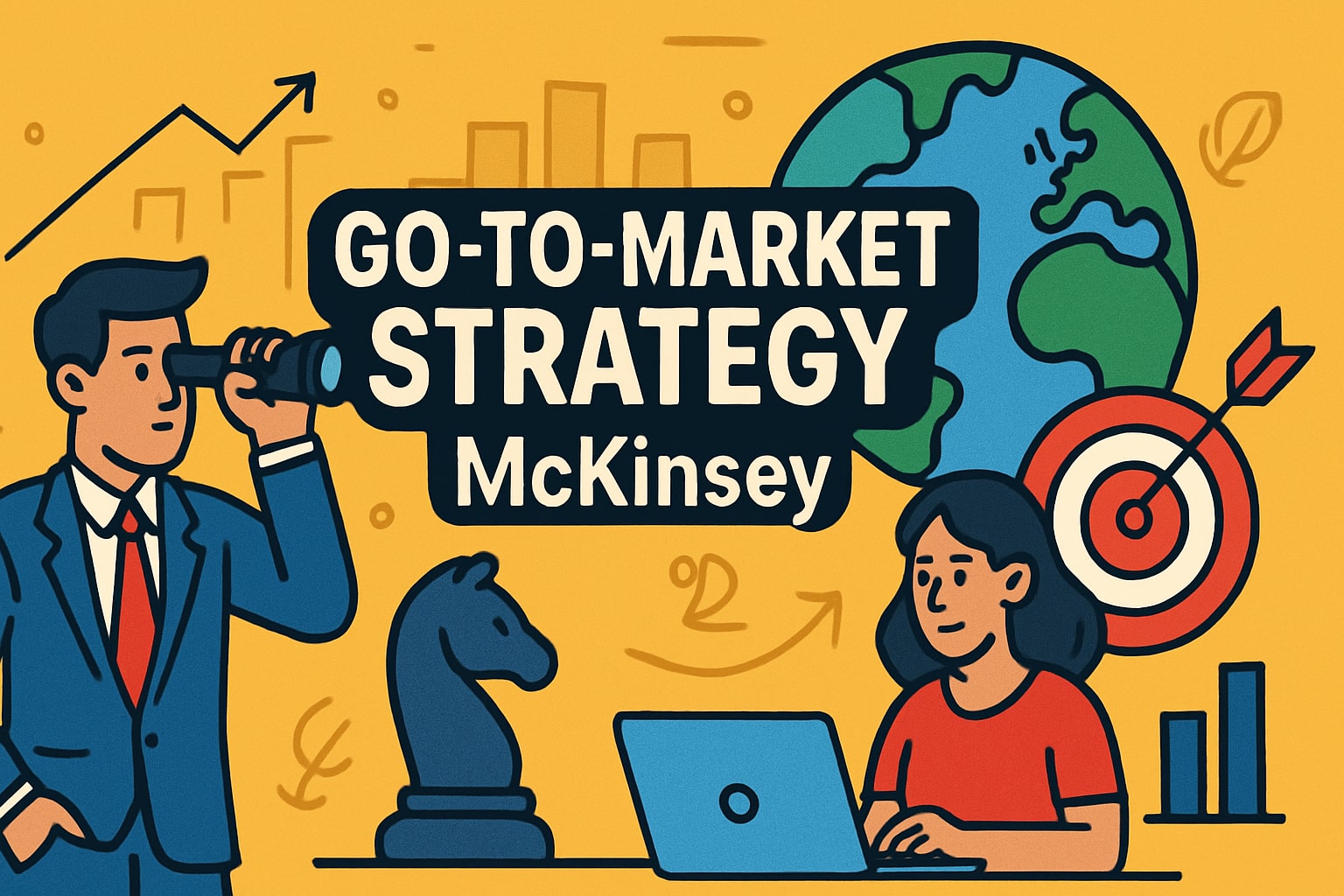Marketing and Positioning Guide: Strategies for 2025 Success


The competitive landscape of 2025 is being rewritten by rapid advances in technology, with AI and automation reshaping every aspect of how companies reach and influence buyers. In this digital-first era, traditional approaches are falling behind as new rules demand agility and alignment.
To win, organizations must embrace marketing and positioning strategies that unite product, marketing, and sales. Data-driven insights and unified teams now drive measurable outcomes, from pipeline growth to ARR impact.
This guide explores how advanced segmentation, go-to-market alignment, agentic AI, and revenue-focused positioning can unlock enterprise software growth. Ready to transform your approach? Discover actionable frameworks and practical steps to lead your market in 2025.
The New Rules of Marketing and Positioning in 2025
In 2025, the landscape for marketing and positioning is transforming at lightning speed. No longer are teams operating in silos or relying on intuition. Instead, growth now comes from a unified approach that fuses product, marketing, and sales into a single, agile engine.
Today’s winning companies harness AI and agentic automation to research markets, segment audiences, and adapt positioning in real time. Agentic AI not only analyzes massive data sets for intent and behavior, but also enables instant adjustments—turning every outreach into an opportunity for relevance.
Gone are the days of chasing vanity metrics. The focus has shifted to measurable KPIs, like pipeline velocity and ARR impact, that reflect true business growth. According to Gartner, 70% of high-growth companies now use unified GTM teams, proving that integrated strategies deliver results. Forrester reports that AI-driven marketing increases pipeline velocity by up to 30%.
Buyer behavior is also evolving. B2B sales cycles are longer, buying groups are larger, and every stakeholder expects a personalized journey. SaaS leaders are using AI to tailor content, segment outreach, and optimize their marketing and positioning on the fly.
To win, organizations must embrace agile positioning strategies, ready to pivot as technology and markets shift. The future belongs to those who align every move with unified data, real-time insights, and a relentless focus on measurable outcomes.

Step 1: Advanced Market Segmentation and Targeting
To win in the 2025 B2B SaaS landscape, companies must rethink their marketing and positioning foundations. Advanced segmentation, powered by data and AI, is the first step toward aligning product, marketing, and sales for measurable growth.

Harnessing Data and AI for Precise Segmentation
Segmentation has evolved far beyond basic demographics. Today, B2B SaaS leaders use agentic AI to build dynamic audience profiles, identifying high-intent accounts and buying committees in real time. Instead of static lists, companies leverage firmographics, technographics, and behavioral intent signals to pinpoint the best-fit segments.
For example, an enterprise SaaS provider might use AI to analyze CRM data, website interactions, and third-party intent feeds to uncover emerging buying groups. This approach drives stronger pipeline and more relevant outreach. According to recent research, 60% of marketers report improved lead quality with AI-powered segmentation. For a deep dive on how leading SaaS brands achieve this, explore B2B SaaS lead generation.
Building Actionable Buyer Personas for B2B SaaS
Effective marketing and positioning rely on buyer personas grounded in both quantitative and qualitative insights. Start by interviewing customers, surveying prospects, and analyzing digital behaviors. Combine these findings with CRM data to map out decision-makers, influencers, and their pain points.
Aligning personas across product, marketing, and sales ensures consistent messaging at every stage. For instance, a SaaS company might equip sales with persona-driven enablement content tailored to each stage of the buyer journey, increasing deal velocity and engagement.
Targeting High-Value Segments for Revenue Impact
Not all segments are created equal. Prioritize those with the greatest revenue potential, strategic fit, and urgency for digital transformation. Focus resources on segments offering the highest ARR and LTV impact, rather than scattering efforts broadly.
Consider an enterprise software vendor targeting industries facing regulatory changes or rapid digitization. By aligning marketing and positioning with these high-value segments, companies can accelerate growth, optimize budgets, and build deeper customer relationships.
Step 2: Go-to-Market Alignment—Unifying Product, Marketing, and Sales
In the fast-paced world of B2B SaaS, true growth no longer comes from isolated efforts. Instead, marketing and positioning thrive when product, marketing, and sales unite as a single, agile team. Imagine the difference: a disconnected company, where each team chases its own goals, versus a unified growth engine, where every move is coordinated for maximum revenue impact.

Breaking Down Silos: The Unified Growth Function
Siloed teams slow down progress and muddle messaging. When marketing, product, and sales each chase different KPIs, misalignment is inevitable. This disconnect leads to wasted resources and missed opportunities in marketing and positioning.
Leading SaaS companies now build unified growth functions. They set shared revenue targets, use integrated dashboards, and create constant feedback loops. For example, one SaaS firm synchronized product launches with tailored sales enablement and coordinated marketing campaigns, resulting in faster pipeline growth.
Frameworks for GTM Execution and Measurement
Alignment needs more than good intentions. It requires proven frameworks and clear metrics. Tools like OKRs, the RACE model, and custom GTM playbooks help teams tie every activity back to pipeline and ARR. Shared dashboards make this impact visible.
Want to see how top SaaS teams operationalize this? Explore B2B SaaS go-to-market alignment frameworks for real-world structures that keep marketing and positioning laser-focused on business growth.
GTM Consult: B2B SaaS GTM Alignment Expertise
GTM Consult specializes in helping SaaS and technology firms master unified marketing and positioning for scalable growth. Their services span market positioning, messaging, enablement playbooks, and building operational dashboards.
Clients see real results, like a 60% pipeline contribution for xtype.io and 300% lead growth for Hadean. With expertise in DACH and US markets, GTM Consult delivers hands-on execution for companies ready to align and win.
Step 3: Positioning for Competitive Advantage in 2025
Crafting a winning edge in the 2025 B2B SaaS landscape starts with strong marketing and positioning. The difference between being chosen or ignored often comes down to how well your value proposition resonates with real business problems.

Crafting a Differentiated Value Proposition
A differentiated value proposition is vital for marketing and positioning in a crowded market. Start by mapping your solution to the customer’s core jobs and desired outcomes using frameworks like Jobs-to-be-Done or the Value Proposition Canvas.
For example, a SaaS company repositioned its platform around agentic automation, unlocking enterprise deals by promising measurable workflow acceleration. Aligning this value with product, marketing, and sales messaging is essential. For more detailed tactics, explore this product marketing strategy guide.
- Use a mix of customer interviews and market data
- Link value to specific, quantifiable results
- Refresh messaging as buyer needs evolve
Leveraging Agentic AI for Dynamic Positioning
Agentic AI is transforming how marketing and positioning adapt in real time. This technology enables B2B teams to personalize website content, sales collateral, and outreach for each prospect, continuously optimizing based on engagement signals.
Imagine an enterprise software firm using agentic AI to tailor demos and proposals for every buying committee. This dynamic approach keeps messaging relevant as buyer priorities shift. Marketing and positioning become living assets, not static statements.
- Integrate agentic AI into your GTM tech stack
- Test and iterate messaging for every segment
- Monitor real-time engagement to trigger adjustments
Positioning for Trust, Authority, and ARR Growth
Trust and credibility are the foundation of effective marketing and positioning. In B2B software, buyers want proof that your product delivers.
Showcase customer success stories, ROI data, and case studies tied to pipeline and ARR impact. An enterprise SaaS vendor, for instance, used transparent reporting and authentic testimonials to win consensus from complex buying groups.
- Prioritize third-party validation and references
- Highlight measurable business outcomes
- Maintain consistency across all buyer touchpoints
Positioning is never set and forget. In 2025, the companies that continuously optimize, leverage agentic AI, and ground every message in customer proof will lead the way.
Step 4: AI-Driven Execution—From Strategy to Revenue
The leap from strategy to revenue in 2025 hinges on how seamlessly you activate agentic AI throughout your marketing and positioning engine. Today, execution is no longer just about working harder—it is about working smarter, using intelligent automation that adapts in real time. Imagine your GTM team empowered by AI, orchestrating every touchpoint with precision and speed.
Agentic Automation Across the Funnel
Agentic AI transforms every layer of the funnel into an intelligent, self-optimizing system. No longer is lead qualification a manual slog—AI chatbots now qualify leads, book demos, and nurture prospects autonomously.
- AI personalizes outreach based on behavior and intent.
- CRM, marketing automation, and sales enablement platforms work in sync.
- GTM teams see handoffs and follow-ups happen instantly, not days later.
With agentic automation, marketing and positioning become proactive, not reactive, giving your team more time to focus on strategy and creativity.
Data-Driven Campaigns and Real-Time Optimization
AI is the engine driving campaign performance to new heights. It analyzes every signal—open rates, engagement, conversion—and reallocates budget on the fly for maximum ROI. Predictive scoring and intent monitoring spotlight the accounts ready to buy, while next-best-action models guide your team’s every move.
Companies using AI for campaign optimization see up to 25% higher conversion rates, according to AI-driven marketing increases pipeline velocity. By weaving marketing and positioning insights directly into execution, teams unlock faster pipeline growth and measurable business outcomes.
Measuring and Scaling Revenue Impact
Tracking what matters is key. The best teams:
- Monitor pipeline, ARR, and attribution in unified dashboards.
- Use closed-loop reporting to connect every touch to revenue.
- Prioritize scaling campaigns based on ARR contribution, not just MQLs.
This approach ensures your marketing and positioning strategies are not just busywork—they are revenue engines ready for 2025.
Step 5: Actionable Playbook for 2025 Marketing and Positioning Success
Ready to transform your marketing and positioning for 2025? Use this actionable playbook to drive measurable growth and stay ahead in the competitive B2B SaaS landscape.
Follow this step-by-step checklist:
- Conduct advanced segmentation using agentic AI for precision targeting.
- Build actionable buyer personas that unite product, marketing, and sales messaging.
- Align your go-to-market team with shared KPIs and unified dashboards.
- Develop a differentiated value proposition focused on tangible business outcomes.
- Integrate agentic AI for dynamic personalization and automated execution.
- Measure revenue impact using operational dashboards, not just MQLs.
Explore practical go-to-market strategy examples to see these steps in action and tailor your approach.
Recommended tools:
- AI-powered analytics platforms
- Sales enablement software
- Unified GTM dashboards
Keep improving:
- Iterate with continuous feedback and market learning.
- Schedule regular GTM reviews and cross-functional workshops.
Every marketing and positioning activity should connect directly to pipeline and ARR. Use this playbook to build a culture of alignment, agility, and revenue-driven execution.
If you’ve read this far, you know that 2025 isn’t just another year—it’s a turning point. Imagine your team finally syncing up, product and marketing speaking the same language, and every decision grounded in real data, not guesswork. That’s the difference when you move from disconnected efforts to unified, AI-powered growth. I’ve seen founders and GTM leaders transform confusion into clarity and pipeline into real revenue by taking the first step—having a conversation about what’s possible. If you’re ready to turn your big ambitions into action, let’s talk. Book Your Personal Intro Call

Latest From
The Blog
Go To Market Strategy Consulting Guide For 2025 Success

Go To Market Strategy McKinsey Guide For Success 2025

Crossing the Enterprise Chasm: A Practical Guide to Sales-Led Growth (SLG)


Let's Build The Future Together







.jpg)